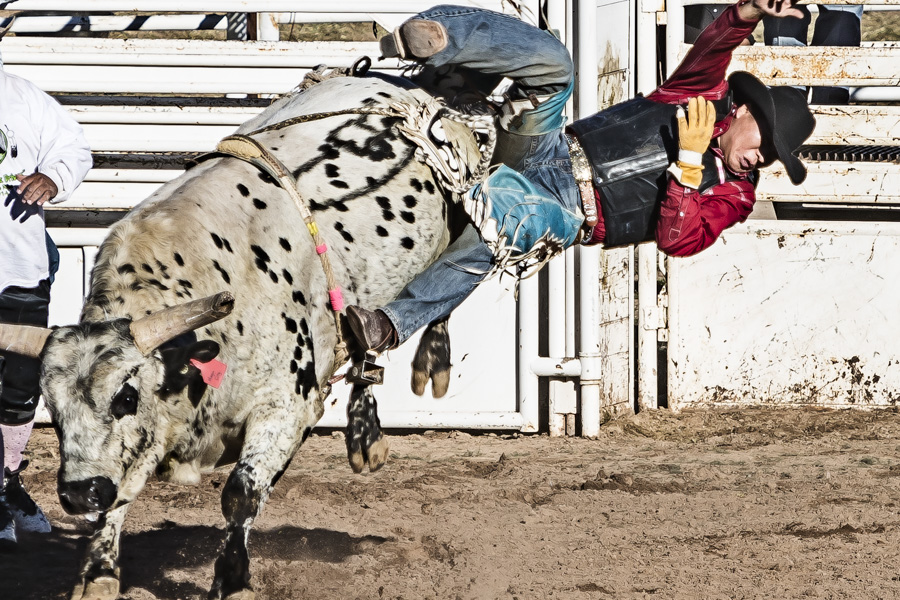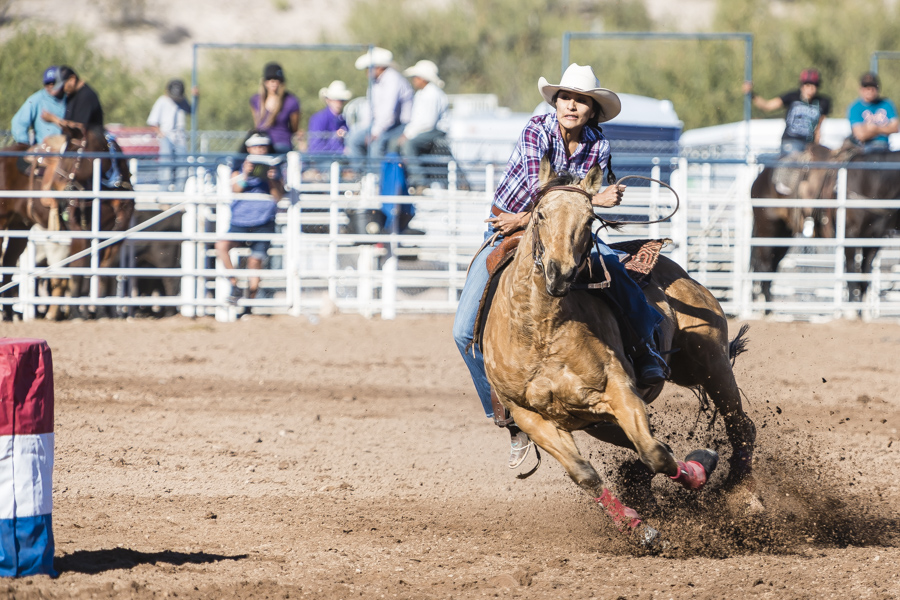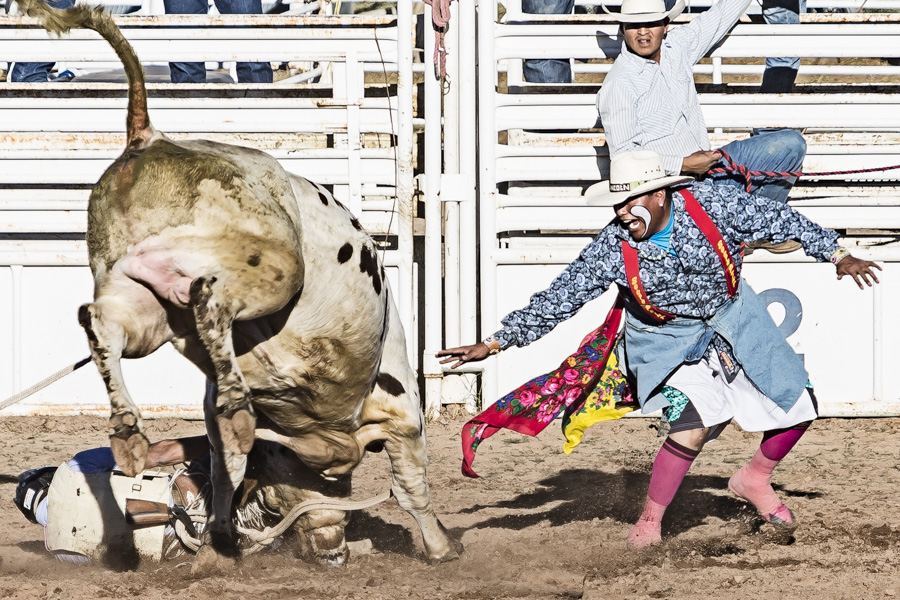I recently shared some action shots taken at a local rodeo. The pictures were presented in the form of a video slideshow that I was unable to publish on this site, due to the large size of the file.
I did receive some questions on the technique for shooting this type of picture, so I will share some thoughts on on that, today.
If you’re not interested in technical details, skip to the pictures.
The secret to any sports action shot is a fast shutter speed (the time the shutter remains open, measured in seconds). A quick glimpse of the subject is necessary to “freeze” the action. The shutter speed should be 1/500 sec or less to achieve the desired result. Slower can produce “motion blur”, which is another way of doing it. It’s not what I was doing and doesn’t apply to these images.
This bull rider was snapped at 1/1000 sec. There is no indication of motion (other than inferred); it could be a still photograph. This speed was easy to achieve in broad daylight. It can be more difficult in lower light conditions and a higher ISO (sensor sensitivity) may be needed to achieve the desired result. An example would be an indoor event, such as a hockey game. In the case of my rodeo pictures, I was able to accomplish a high speed shutter with ISO 100.
For the rodeo (pretty fast action) I chose to set the camera on shutter priority. That means that I fix the shutter speed, as well as the ISO setting. The camera determines the required aperture setting to achieve the correct exposure, automatically. I use auto-focus, with the “AI-Servo” setting selected. That’s Canon’s term for focus that once locked on to the subject will continuously readjust to maintain focus as the subject moves. I set the shutter for a continuous burst of shots (up to 7-8 per second under good light conditions). And, I use a large array of focus points to ensure there is always at least one targeted on the moving subject.
As the action begins, I focus the camera, hold the shutter open and track the subject, much like a duck hunter would do with a shotgun. This way, I don’t have to anticipate when the best action is going to happen and try to time it. I rapidly capture an array of shots and invariably, there are 1-2 really good ones in a burst.
The camera will continue to shoot until the processor’s buffer fills. Then it slows down and ultimately stops until the buffer clears. This happens if the images cannot be moved quickly from the camera onto the storage card. The problem can be averted by using a high speed card. CF cards are available that will accept data at 160 MB/sec and SD cards up to 150 MB/sec. Don’t let your storage card be a bottleneck!

Shooting in Shutter Priority Mode delegates the choice of aperture setting to the camera. If you are concerned about controlling depth of field, this choice could result in problems. In the case of the above shot, a wide aperture, f2.8 was necessary to achieve the 1/1000 sec. shutter speed. Depth of field was not a problem because I was much further away from the subject than the subject was from the background. Of course, you could increase the ISO setting to reduce the aperture size and increase the depth-of-field, if necessary. I would also argue that you need not worry about depth of field in a shot like this. As long as the subject(s) are in focus, who cares about the background. In fact, it would likely help to de-emphasize something that would otherwise be a distraction.
Some photographers prefer to shoot action in Aperture Priority mode, in other words, they set the aperture and allow the camera to set the shutter speed to achieve the correct exposure. They keep an eye on the speed and adjust the aperture or ISO to ensure the necessary speed. I can only conclude that they’ve chosen to ensure the desired depth of field. This next shot was taken in Aperture Priority mode, with the aperture set to f3.5 and the ISO at 100. The resultant speed was 1/500 sec, so no problem. The background was a little blurrier because I had moved to a position closer to the action.

One more picture to help balance the text. Nothing more to say.


Peter – these are just outstanding. You have captured the action/danger/tension perfectly. Rodeo on my photo outing list this year – without doubt.